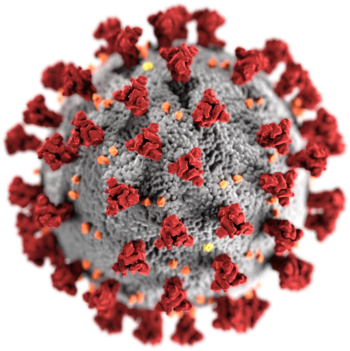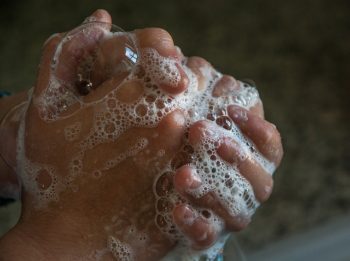 COVID-19 #101
COVID-19 #101
Hello everyone and welcome to another Factual Friday.
By now we’ve all heard about the Coronavirus, but few of us really understand what it is or how we can protect ourselves. And, of course, one of the most frightening aspects of any threat we might face is the lack of information or worse, the glut of misinformation.
As a three-time cancer survivor and one – who like so many of you – is living with a compromised immune system, my mission in life is to get as much information as I can and then share it with you.
So, let’s begin by clearing up a few things. First, the coronavirus is not new. Coronaviruses are a group of known viruses that have existed for years causing diseases in mammals, birds and humans. In humans, these viruses are responsible for respiratory tract infections that are usually mild and similar to the common cold.
There are a few rare forms of the virus, however, that can be lethal and these include SARS, MERS and the new strain we’ve all been hearing about, which goes by many names, including SARS-CoV-2, 2019 Novel Coronavirus, 2019-nCoV, Covid-19 or Wuhan Coronavirus so named for the Chinese city in which this virus appears to have originated in a food market in December of 2019.
Covid-19, the name we’ll be using in this piece, spread rapidly from Wuhan city to the entire country of China in just 30 days. Respiratory viruses thrive during the winter months and in an unusually cold winter in China, Europe and Western Asia Covid-19 continued its march into more than 80 countries and territories around the world to date.
To better understand Covid-19, it’s time to review a few facts on which most healthcare experts and representatives from the World Health Organization (WHO) and the Center for Disease Control (CDC) seem to agree.
Covid-19 remains airborne for about 6 to 10 feet before dropping to the ground.
When in crowds where someone infected with the virus coughs or sneezes, the virus could travel and adhere to the clothing or skin of anyone within a 6 to 10 foot range. Close your mouth, breathe through your nose and leave the area.
Covid-19 can live on your hands and skin for several hours to a day.
Never touch your face without washing your hands. Rubbing your eyes, picking your nose or putting your fingers in your mouth for any reason can transfer the Covid-19 virus to your mucous membranes where it can merge with your bodily fluids. Washing your hands regularly and properly throughout the day is vital for preventing the Covid-19 virus. And just what is proper hand washing? We have more on that below.
Covid-19 may be able to live on fabric for 6-12 hours. This virus adheres to smooth surfaces more easily than rough or porous surfaces like fabric. Yet, clean clothes are a must. Normal laundry detergent used in hot water will help kill the virus or at the very least, help wash it down the drain. In addition, throwing your clothes in a hot dryer will help kill any remaining virus.
 Covid-19 can live on cardboard for 24 hours and on metal or plastic surfaces for up to 72 hours.
Covid-19 can live on cardboard for 24 hours and on metal or plastic surfaces for up to 72 hours.
This is a long time for a virus to hang around. The amount of virus appears to decrease over these periods of time, which means the risk of infection probably also decreases over time. Nevertheless, after touching metal railings, car doors, shopping cart handles, grocery packaging, delivery boxes or elevator buttons be sure to wash your hands as soon as possible.
THE SKINNY ON HAND WASHING
Hand Sanitizers
These products are alcohol-based. They are very effective in preventing the spread of bacterial-based diseases and according to the CDC, the spread of viral diseases as well, including the flu and common cold. They do this typically by dissolving the cellular membrane of many contaminants. Alcohol evaporates quickly after killing the first layer or two of germs. This means that while some good bacteria will die as well, enough will remain on the lower levels of tissue and on the arms to re-colonize.
To be effective, hand sanitizers must contain a minimum of 60 percent alcohol. Also remember, they are not a replacement for regular soap and water. Dispensers can be found in most public venues and are to be used when sinks and soap are unavailable.
Soap and Water
Lathering with very warm water and regular soap remains the best way to clean hands. As a rule of thumb, lather for 20 seconds or as long as it takes you to sing Happy Birthday twice. Also new guidelines from the CDC as of March 29th state that as long as you’re lathering properly, cold water will work just as well as warm.
Soap contains fatty acids chemically similar to the membranes of bacterial cells and viral coats. Soap invades the membranes of these contaminants, disrupts them, kills the bacteria and causes viruses to disassociate and break down. While a virus may not die, it will be washed off the skin and down the drain with proper lathering.
Antibacterial soap is not necessary. These soaps do kill bacteria, but they also linger on the skin which enables the remaining bad bacteria to develop a resistance. As far as viruses, these soaps work just like other soaps in that they break down the outer membrane of a virus which can then be washed off the skin and down the drain with proper lathering.
Finally, instead of using bar soap, use a soap pump to avoid contaminating the bar soap itself with germs. Dry your hands with a single use paper towel or napkin instead of a cloth kitchen or bath towel which already may be covered with germs. And use disinfectant wipes to regularly clean bath and kitchen work surfaces and faucets.
Of course, not all healthcare experts will agree on everything. Yet this list should give you a solid understanding of Covid-19 and offer a few ways in which you can protect yourself.
But please don’t forget — information and facts as we know them today can always change tomorrow. This is a new virus with which we’re unfamiliar. What we believe to be true today, may change as we learn more and new information comes in. So remain vigilant, aware, proactive and up-to-date.
And always remember our mantra – Don’t Be Afraid – Be Informed!
Thanks again for joining me everyone. Until next time, stay in GOOD HEALTH and . . .
TAKE THE COURSE AND TAKE CHARGE!
UPDATE AS OF FEBRUARY, 2021:
Nearly one year after the beginning of the Pandemic, the basic precautions for staying safe continue to be the same.
THE 3 Ws:
- Wear a mask.
- Wash your hands.
- Watch your distance.
The very good news is that we now have 2 approved-for-use vaccines in America. One is the Pfizer vaccine, and the other is the Moderna. These vaccinations will be delivered to groups of people based upon their risk factors, including age and comorbidities which are underlying health conditions such as diabetes and active cancer.
We are reaching the light at the end of the tunnel. Please remain careful everyone and stay safe!
For more information here are a few links that might be helpful:
https://www.today.com/style/how-long-does-coronavirus-live-clothes-t175943
https://www.medicalnewstoday.com/articles/coronaviruses-how-long-can-they-survive-on-surfaces
https://www.bing.com/search?q=how+long+can+coronavirus+survive+on+surface&FORM=R5FD4



Leave a Comment